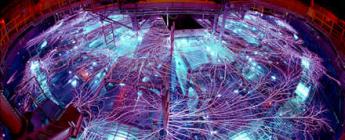


Technology

The technology behind the ISDC's efforts to reach deep space
The technology used by the ISDC is sourced from a number of highly classified programs. Most is derived from advanced research programs around the world, in areas such as fusion-based generation, magnetoplasma propulsion and tactical systems.
Some technology has been adapted from recovered extra-terrestrial vessels, including new types of materials that dramatically improve the efficiency of terrestrially-engineered systems. This makes previously theoretical technologies such as fusion a practical reality.
Development programs across the ISDC are responsible for researching the various technologies needed for deep-space exploration and applying it to the construction of vessel systems.
Need help with the technology section?
















